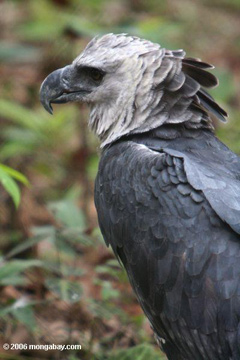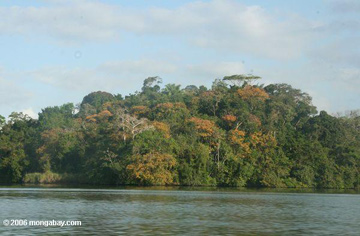Cache of rare and undiscovered species under threat in Panama
Cache of rare and undiscovered species under threat in Panama
mongabay.com
April 21, 2008
Rare and previously undiscovered species are under threat by loggers, ranchers, and poachers in an isolated patch of cloud forest in Panama, a prominent group of scientists has warned. The group, the Association for Tropical Biology and Conservation (ATBC), has called on the Panamanian government to immediately provide protected-area status to the region.
In a resolution passed earlier this month, the ATBC urged Panamanian policymakers to support conservation efforts set in place by Mr. Guido Berguido, the operator of a small ecotourism business. It was Berguido who first identified the biological significance of Cerro Chucantí, a 1440-meter-high massif
located 120 kilometers east of Panama City, and then raised funds to protect tracts of forest from developers.
“Scientists are realizing that Cerro Chucantí is one of the biological jewels of Panama–an exceptional hotspot of biodiversity and endemism,” said Dr. William F. Laurance, a scientist with ATBC. “Clearly this imperiled area merits formal protection, and we very much hope the Panamanian government will be able to help.”
“Guido Berguido is almost single handedly staging an enormous effort to get Cerro Chucantí designated as a national park.”
Local biological hotspot

Harpy Eagle in Panama |
In issuing the resolution, Laurance and other ATBC scientists note that the forests of Cerro Chucantí support populations of endangered wildlife such as the Great Green Macaw and Baird’s Tapir as well as vulnerable species such as the Giant Anteater, Harpy Eagle, Great Curassow, Puma, and Jaguar. Further, preliminary field surveys of Cerro Chucantí by the Smithsonian Tropical Research Institute, the University of Panama, and the Gorgas Laboratory have revealed the presence of unique fauna and flora, some of which have yet to be described by science.
Cerro Chucantí may also serve as an important corridor for wildlife, according to ATBC scientists.
“The natural vegetation at Cerro Chucantí provides a continuous elevational gradient, ranging from mangrove forests on the Pacific coast, to lowland tropical rainforest, to mid-elevation and montane forest, and finally to cloud forest on the mountain’s summit,” stated the resolution. “Each of these elevational zones contains specific assemblages of animal and plant species that are adapted to narrow thermal ranges and microhabitats. Many native bird, bat, and insect species in the tropics require continuous elevational gradients in order to undertake seasonal movements while foraging for fruit, nectar, and other resources… Continuous elevational gradients such as that at Cerro Chucantí will be crucial in the future to permit species migrations in response to global warming and climatic change.”
Environmental services

Tropical forest in Panama |
Cerro Chucantí also provides important ecosystem services, including providing a year-around supply of clean drinking water to nearby villages, sequestering carbon, and serving as a base for ecotourism activities and scientific research. The Wounann people, an indigenous group, also claim part of Cerro Chucantí for traditional use.
“The Association for Tropical Biology and Conservation,” stated the resolution, “urges the National Government of the Republic of Panama to declare an immediate moratorium on non-traditional deforestation and forest degradation in the greater Cerro Chucantí area.”
ATBC “recommends that the Panamanian Government as well as international-aid organizations and relevant nongovernmental groups collectively provide adequate financial and logistical resources to ensure that remaining forests within the proposed Chucantí Protected Area are monitored and protected in perpetuity.”














